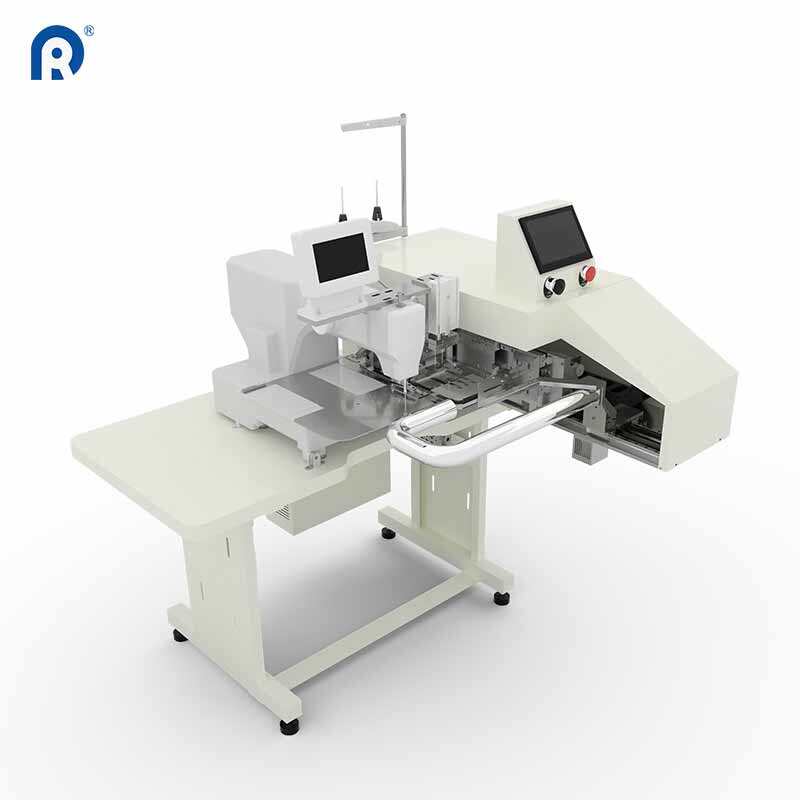
Introduction
In recent years, the curtain manufacturing machinery industry has experienced significant growth, driven by technological advancements, increasing demand for home decor, and the global expansion of the construction sector. As the world becomes more urbanized and consumers seek both functionality and aesthetics in their living and working spaces, the need for efficient, high-quality curtain production has never been greater. This essay explores the evolution, current state, and future prospects of the curtain manufacturing machine industry, highlighting key trends, challenges, and opportunities for stakeholders.
The Evolution of Curtain Manufacturing Machines
The curtain manufacturing process has evolved dramatically over the past few decades. Traditionally, curtains were handcrafted, requiring skilled labor and significant time investment. However, with the advent of industrialization and automation, the industry witnessed the introduction of specialized curtain manufacturing machines. These machines, including the curtain sewing machine, automatic curtain machine, and various types of curtain production equipment, have revolutionized the way curtains are produced.
Early curtain machines were primarily mechanical, offering basic stitching and hemming functions. Over time, manufacturers integrated electronic controls, programmable logic controllers (PLCs), and computer numerical control (CNC) systems, enabling greater precision, speed, and customization. Today, modern curtain manufacturing machines can perform a wide range of tasks, from fabric cutting and pleating to grommet insertion and automated folding, all with minimal human intervention.
Current Trends in the Curtain Manufacturing Machinery Industry
1. Automation and Smart Technology
One of the most significant trends in the curtain manufacturing machinery industry is the adoption of automation and smart technology. Automatic curtain machines equipped with sensors, robotics, and artificial intelligence (AI) are becoming increasingly popular. These machines can adjust settings in real-time, detect fabric defects, and optimize production processes, resulting in higher efficiency and reduced waste.
2. Customization and Flexibility
Consumers today demand personalized products that reflect their unique tastes and preferences. As a result, curtain manufacturers are investing in flexible curtain production equipment capable of handling various fabrics, designs, and sizes. Advanced software allows operators to quickly switch between different production runs, catering to both mass production and small-batch custom orders.
3. Sustainability and Eco-Friendly Practices
Environmental concerns are shaping the future of the curtain industry. Manufacturers are seeking energy-efficient machines and sustainable materials to reduce their carbon footprint. Modern curtain sewing machines are designed to minimize energy consumption, while innovations in fabric recycling and waste management are gaining traction.
4. Integration with Digital Platforms
The rise of e-commerce and digital marketing has transformed how curtains are sold and distributed. Curtain manufacturers are leveraging digital platforms to showcase their products, receive custom orders, and manage supply chains. Integration between curtain manufacturing machines and digital order management systems streamlines production and enhances customer satisfaction.
Challenges Facing the Curtain Manufacturing Machinery Industry
Despite its growth, the curtain manufacturing machinery industry faces several challenges:
- High Initial Investment: Advanced curtain production equipment and automatic curtain machines require significant capital investment, which can be a barrier for small and medium-sized enterprises (SMEs).
- Skilled Labor Shortage: Operating and maintaining sophisticated machinery demands skilled technicians, and there is a growing shortage of qualified personnel in many regions.
- Rapid Technological Change: The pace of innovation means that machines can become obsolete quickly, necessitating continuous investment in research and development.
- Global Competition: The industry is highly competitive, with manufacturers from China, Germany, Italy, and other countries vying for market share.
Opportunities and Future Prospects
1. Expansion into Emerging Markets
Emerging economies in Asia, Africa, and Latin America present significant growth opportunities for the curtain manufacturing machinery industry. Urbanization, rising disposable incomes, and a growing middle class are driving demand for home furnishings, including curtains. Manufacturers who can offer affordable, reliable machines tailored to local needs will be well-positioned to capture these markets.
2. Technological Innovation
Continued investment in research and development will yield smarter, more efficient curtain manufacturing machines. Innovations such as machine learning, predictive maintenance, and the Internet of Things (IoT) will further enhance productivity and reduce downtime. For example, IoT-enabled machines can provide real-time data on performance, allowing operators to anticipate maintenance needs and avoid costly breakdowns.
3. Collaboration and Partnerships
Collaboration between machine manufacturers, fabric suppliers, and curtain designers can lead to the development of integrated solutions that streamline the entire production process. Partnerships with technology companies can also accelerate the adoption of digital tools and automation in the industry.
4. Focus on Sustainability
As consumers become more environmentally conscious, there is a growing market for eco-friendly curtains and sustainable production methods. Manufacturers who prioritize green practices, such as using recycled materials and energy-efficient machines, will gain a competitive edge.
Conclusion
The curtain manufacturing machinery industry is at a pivotal moment in its development. Driven by technological innovation, changing consumer preferences, and global market expansion, the industry is poised for continued growth. However, success will depend on the ability of manufacturers to adapt to new trends, invest in advanced curtain production equipment, and embrace sustainable practices.
In summary, the future of the curtain manufacturing machine industry looks promising. By leveraging automation, customization, and digital integration, manufacturers can meet the evolving needs of customers while improving efficiency and profitability. As the world continues to urbanize and prioritize home aesthetics, the demand for high-quality curtains—and the machines that produce them—will only increase. Stakeholders who stay ahead of industry trends and invest in cutting-edge technology will be well-positioned to thrive in this dynamic and competitive market.